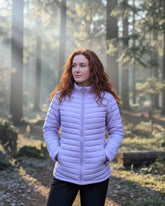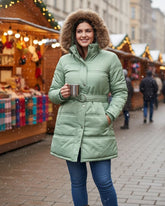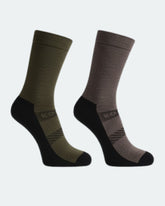An exclusive interview with Adventure Pulse
Did you know that Samir Patham, Co-founder of Adventure Pulse tested Kosha Gear on his Everest Base Camp Expedition, Mount Kilimanjaro hike and has even worn it to the Sahyadris in the monsoons? We finally got down to having a long chat with him on the occasion of Adventure Pulse completing 10 years and their much deserved TripAdvisor’s Traveller's Choice Awards for 2020.
Read on to learn how to stay inspired as an entrepreneur and inspire children on exploring the great outdoors.
The stunning cover image taken by Takeshi Nakayama is of team Adventure Pulse hiking in the World Heritage Site - Sagarmatha National Park, as a part of their Everest Expedition in 2018.
Can you tell us about how Adventure Pulse(AP) came to be?
Sauraj & I started out as regular corporate going employees after completing our MBA. The idea of AP originated when we went to Nepal for a climbing expedition to Mera Peak. It was brutal, exhausting and mentally frustrating. But the feeling of reaching the summit was truly exhilarating. After coming back to work, we realized that if two ordinary guys like us could have this amazing experience, then certainly others would be keen instead of the regular Europe cruises.
We set up Adventure Pulse with a focus on more niche locations. Traditionally people would not consider trekking as a vacation, and it was a common idea that you have to be made of steel to go for treks. We decided to expand the horizons and understanding and translate those feelings of accomplishments as we had, and thus AP was started. We chose smaller groups, which allowed us to give a more hands-on and mindful experience. We were able to look into various service levels such as food, higher staff to people ratio, etc. This has allowed us to build long term and enriching relationships with our participants.
AP fun fact: The oldest person is 72 years old - the youngest person was 6 years old!
An example of AP's involvement: For the 6-year-old, it wasn't just hand-holding and preparing him but also his mum. It is more personal than a mere client service relationship. Helping the mum understand what to expect, mentally prepare for the trek, pre-trek physical fitness etc. So much so, the same boy ended up climbing Mt. Kilimanjaro at 9 years old again with us. We start talking to the participants 3 to 4 months prior. Sauraj and I go on many treks ourselves thus ensuring the quality of the experience. We want our participants to be both physically and mentally be prepared for the expedition they have chosen.
An example of AP's varied participants: A 72-year-old maverick, namely Col. Nirmaljeet Singh Pannu! He was truly amazing, with years of experience from the Army and would lead fellow participants and often us from the front. Despite his age, he was the life of the party and would regale us with his experiences during the war. You can read more about him
AP's Instagram and FB posts are inspiring and truly represent their efforts "not to lose heart" during the lockdown.
About AP’s selection of Team members: We carefully pick those who are passionate about the outdoors and travel. In addition, in the process of selecting, we are very transparent with them - most people join an adventure company expecting to get free travel experiences. Sauraj & I highlight the business aspect clearly. The trekking part is in fact more of a vacation than the backend work that goes into keeping AP up and running as an initiative. Not only is AP invested in their participant's growth and welfare, but also their team members. The team accompanies Sauraj and me on expeditions so that they learn by shadowing and familiarize themselves with the products on the ground. We have even sponsored the team's upskilling at times with the basic and advanced mountaineering training courses from HMI Darjeeling.
About AP's journey the past 10 years: Every year has been a different challenge in the past 10 years. For instance, the average group sizes have been 9 to 12 people. There have been years we have struggled, but we opted to still stick with smaller group sizes as we do not look at ourselves as tour operators, we prefer to be known as Adventure Management Consultants.
Our goal is to facilitate your own adventures. In the light of the pandemic, we feel that possibly the future of such treks being smaller groups and more private, with family and friends.
A tip to aspiring entrepreneurs: you have to really believe in what you are doing and be passionate about it, that is what inspires others as well.
Q2. We love the innovative way AP has created the Online Course for Kids. Can you tell us more about it? What age group? Anything in the works for an older age group?
That honestly happened as a way to assuage our own boredom during the lockdown. Since we couldn't go to the mountains, we thought of getting the mountains to us. As we have a long term relationship with our clients, we tried structuring all the lessons we learnt from the mountains.
For example in the Junior Mountaineers Course, instead of just boring theory-based concepts, we made it more fun by making it more interactive. We decided to theme it as "let's go climb a mountain" and took the Seven Summits. So that’s seven expeditions, one in each continent. As we've climbed quite a few of them, we merged our first-hand experiences with interesting theoretical concepts. If we’re going to Antarctica we learn about how to prevent hypothermia, for Kilimanjaro we learn about the biodiversity of Africa, for Denali the history of how Alaska was once part of Russia. We included fun mountain warm-up exercises as well or visuals of a plane landing on the glacier and such so that it wasn't just a boring lecture. It was really exciting for us too!
We started by reaching out to people who have climbed with us, once we were confident of our content. Primarily ages 6 to 12, though we had kids as young as 5. For the little ones, we explained to the parents that they will have to assist with the logging in etc. and they shared that they too were excited and interested in attending. It motivated us, especially when the parents would message us - like, one mum let us know that her 6 years old was explaining hypothermia to her and how she was so happy! Or how they would get requests from parents of kids outside the age bracket of the course (8 to 12) for them to participate in it.
Q3. As everything has become less tactile and more 'Virtual" what advice would you give parents/guardians of school-going children on the importance of the outdoors? Especially keeping the current situation in mind?
I have a slightly different take on it, before the lockdown when parents would tell their children to go out and play, they would come home and play Nintendo etc. Nowadays kids want to go out, as they have been stuck at home, kids are going out and playing outside in society compounds.
In the past few months, they have been made to reflect on the joy of being outdoors. In fact, it has taught all of us how great it is to be outside, to get away from the boxes, they want to start engaging a lot more.
Our upcoming trip to a campsite in Binsar National park is with 4 families who attended the Junior Mountaineering Course. We try explaining the situation simply - the most dangerous element is the human, not the trees or the rivers. When you are stepping outdoors the chances of getting the infection is less from the natural surroundings, even the local people have been isolated. The more dangerous places are trains, planes, etc. We make our participants aware of how to mitigate the risk during the commute. We feel adventure and trekking will be the preferred travel option, in comparison to being stuck on a cruise boat with 1500 other people.
An important part of the AP code of conduct is that when we are trekking we make sure people are aware. Keep fingers and toes to yourself as you never know which natural habitat of an animal or plant it is, whether it is poisonous or not...See but do not touch! We aim to leave it as undisturbed as possible.
Q4. 3 quick tips on how to get a child interested in exploring?
- Lead by example: if parents are interested in a trek and the outdoors, the child also wants to learn about it. I (Samir) have seen it so subtly inspiring them. When we meet the children of parents who have trekked with us, the kids are excitedly pulling out their mum's trekking boots to show us, or getting into dad's sleeping bags. Yes, parents are busy with work, but if one can go out for a walk in the morning and take your kid along with you, it goes a long way.
- Make it an adventure: For example, Sauraj's niece - her dad built a tent with sheets in her room. Suddenly her room transformed into an adventure campsite. It doesn't take too much time and effort to inspire the kids.
- Content that they exposed to the kind of computer games or books even. I grew up with books about Huckleberry Finn, Tom Sawyer, Robinson Crusoe, and would read all about the adventures they were having. The soft selling via the type of content they are exposed to makes a big difference. In fact, after the Junior Mountaineering Course, the parents told us about how the kids are now super interested in the mountains. Expose them to the right media with some form of the outdoors involved.
Q5. Any other AP offerings we can look forward to? Any special trips you want to highlight for families/solo travelers?
A: Because of international travel restriction - local travel has opened up. AP's focus for the next 2 to 3 months is identifying more adventure campsites like the Binsar National Park with the following criteria - are family-friendly and near metros of India. Sauraj, the team and I are investing time and effort to figure out the accessibility and quality of these sites. You can stay tuned for updates via our Instagram, Facebook and Website.
Looking to go on an expedition with the Adventure Pulse and need the right layers for yourself, your loved one or child? Shop our premium quality, durable, affordable hiking layers at a special 10% discount using the code MYKOSHA at kosha.co
Share your adventure and experience with us by tagging us @koshatravelwear on Instagram, Facebook, LinkedIn, Pinterest and use #mykoshastory !
Written by Kosha Team Member: Namrata Ganguly
Editor’s Picks
Alaskan Parka Jacket For Women - Slim Fit
- ₹8,925.00
₹11,900.00- ₹8,925.00
- Unit price
- / per
Lightweight Packable Puffer Jacket For Women
- ₹5,040.00
₹8,400.00- ₹5,040.00
- Unit price
- / per
Alaskan Parka Plus Size Jacket For Women
- From ₹10,125.00
₹13,500.00- From ₹10,125.00
- Unit price
- / per
Woolmark Full Sleeves High Neck Thermal Top For Women
- From ₹1,845.00
₹1,845.00- From ₹1,845.00
- Unit price
- / per
Men's Pack Of 2 Merino Wool Cushioned Technical Socks
- ₹2,148.00
₹3,580.00- ₹2,148.00
- Unit price
- / per















